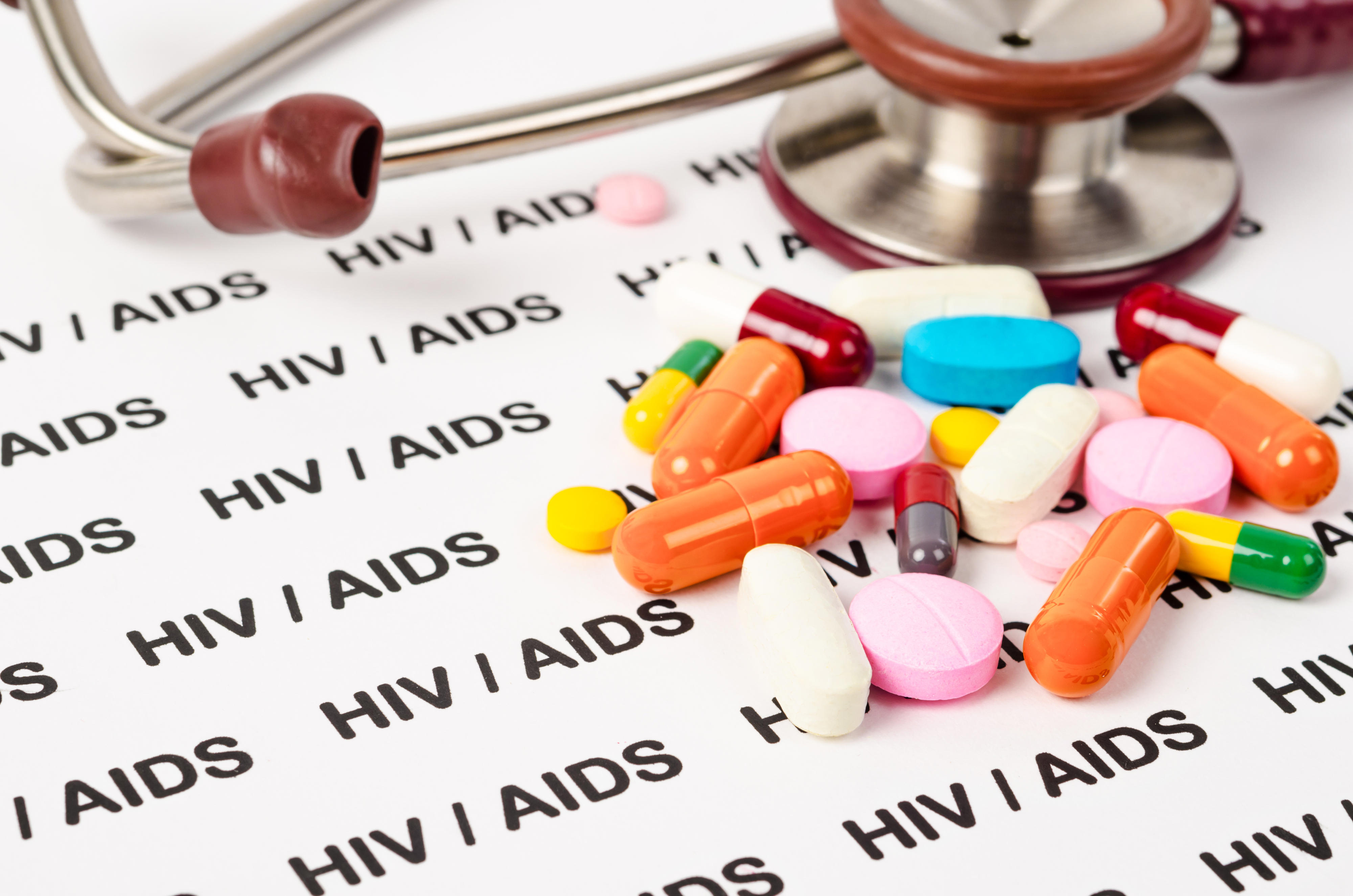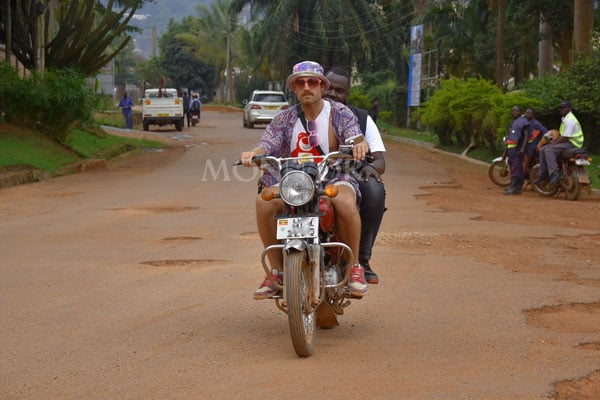Why HIV fight in Kwania has low success rates

There are several barriers to HIV viral load suppression and some of them include forgetting to take medication, high pill burden. PHOTO | WWW. MSF.ORG
What you need to know:
- The fight against HIV poses enormous challenges for Kwania District in northern Uganda, generating fears that success may be too difficult to attain. Some of the hurdles include health facilities’ inability to conduct viral load testing, poor adherence to medication due to lack of food, irresponsible consumption of alcohol and risky sexual behaviour as Bill Oketch writes
Mildred Acio is among the patients who access treatment and care at Aduku Health Centre IV. The 52-year-old woman lives six miles from the health facility, a distance she says is a huge obstacle to her.
“I get tired because I have to walk to the hospital. The problem is that there are delays in accessing the drugs. You can come at 8am and leave at 4pm. On the way back, I have to rest by the roadside four times before I reach home,” she says.
Acio also laments that the HIV patients are not fed while they wait for attention from the medical workers.
“There is a lot of hunger here. We need a non-governmental organisation (NGO) that gives us food, like in other districts. In Oyam District, many NGOs are helping people living with HIV by delivering food, sugar, and soap to them,” she says.
Recent data from Uganda Aids Commission shows that Kwania District has an HIV prevalence rate of 5.9 percent compared to the national prevalence rate of five percent.
James Dickens Awongo, the district’s HIV focal person, says of these, 80.2 percent are on antiretroviral treatment (ART).
“We have 7,333 people on ART. 524 of them are aged between zero to 19 years, while the rest are 20 years and above. The district has six treatment sites accredited by the Ministry of Health and three are satellite sites, which are not accredited,” he says.
The viral load of children and adolescents stands at 87 percent, while that of adults is 93 percent. The non-accredited health facilities cannot access all the packages needed for them to provide effective treatment to their clients.
“They cannot place orders with the National Medical Stores for drugs. Instead, they borrow or pick antiretroviral drugs from accredited facilities, which in turn, causes drug stockouts in those facilities. This affects access to treatment because the quantification is always done according to the number of clients in each facility,” Awongo says.
Eunice Aceng, an HIV counsellor working with Joint Clinical Research Centre (JCRC), based at Aduku Health Centre IV, says currently, the district is currently suffering stockouts for ART regimens recommended for use in children with HIV such as the combination drugs Abacavir (ABC)/Dolutegravir (DTG)/Lamivudine (3TC).
“We have had stockouts since the beginning of August this year and we have been borrowing drugs from nearby districts. However, at some point, those districts also run out of stock. The reason why the suppression rate (viral load) in children is very low is due to the drug stockouts,” she says.
Children’s predicament
Some families in rural Kwania are headed by children living with HIV who lack the support they need from caregivers. Due to crop failures and poverty, these families sometimes lack food.
“Last year, we had a problem of famine and people were reporting to us that children were refusing to take their medicine because they did not have food. At least, there is rain this year, so we hope the suppression rates will go up,” Aceng explains.
Food insecurity and HIV are intertwined in a vicious cycle that heightens vulnerability and worsens the condition. Aceng warns that a lack of medication adherence is disastrous.
“When someone is not taking their ARV medication on time, the virus keeps multiplying, raising the viral load. You know this virus fights the immune system and when it is weak, it is vulnerable to opportunistic infection,” she says. Awongo also blames the high non-suppression rate in children on the lack of care by their parents and guardians.
“These people are also looking for survival and have to leave their homes for many hours. So, besides the lack of food, the timing of medication is a problem. But you cannot take mediation on an empty stomach,” he says.
Sometimes, the children walk long distances to the health facilities for drug refills without their parents. They also face stigmatisation from their peers.
“They meet other children at the health centre who can easily gossip about them and their HIV status. So, you find them hiding. We have 39 children who come to this health centre for drugs. They are orphans and are now taking care of their siblings or their older siblings are taking care of them,” Aceng says.
She adds that if the older sibling is a girl, the situation will force her to look for someone to marry her to ensure a daily supply of food for herself.
“She will feel no qualms about abandoning the younger children in the home alone. Sometimes, when we make home visits, we need to talk to an adult about adherence because a child will not understand you or implement what you are saying. But there is no one to talk to,” she says.
District strategies
Not all is lost, though. Kwania District leadership has employed several strategies, which they believe if well implemented, can generate impressive results in the battle against HIV. These strategies include prevention, care and treatment, social support and protection, and system strengthening.
“We carry out sensitisations in the workplace and at the community level through radio talk shows that are intended to reach the targeted populations. We have HIV testing and counselling where those who are tested positive are immediately enrolled into care,” Awongo explains.
He adds that clients are being encouraged to form psychosocial support groups where they can address the stigma they face in the community and advise each other on how to earn a living.
“We have coordinating structures from the district to the rural level such as the District Aids Commission that is replicated up to the village level. They are in charge of operationalising the district’s HIV policy,” Awongo says.
Bicycles to the rescue
Alex Tino, a resident of Baranywar Village, Ajok Parish in Inomo Sub-county has been living with HIV since 2007. The 71-year-old says her only challenge is accessing medication.
“I am the only one in Kwania taking a particular drug, so I was transferred to Lira Regional Referral Hospital, which is 26 miles away. Sometimes, I fail to get transport to Lira District. However, an organisation donated bicycles to us, which we use to ease our movements within Kwania,” she says.
Like in other communities in the Lango sub-region, a bicycle is a luxury in Kwania. Union of Hope, a community-based organisation, recently launched a bicycle initiative to help HIV positive mothers manage their chores and small-scale businesses, to improve their income, and in turn, their adherence to treatment.
Bosco Okello, director for documentation and fundraising in Union of Hope, says the bicycles are imported and distributed to female clients who have been identified by the local leaders and health facilities in Kwania and Apac districts.
“The provision of bicycles fosters respect in domestic households and influences increased autonomy of women, especially widows. The bicycles help women reach the health facilities without losing energy, improve their market access to sell produce, and make it easier for them to fetch water from the well,” he says.
One bicycle per household also helps the women’s children pursue their activities such as going to school and collecting food from the gardens. Donors in Europe and the United States of America collect the bicycles and send them to the organisation. The latter then has to fundraise for Shs16m to pay import duty and other taxes.
“We also sell the bicycles to those who can afford to buy them, to raise money to train the women in business skills that can improve their livelihoods. The women’s challenge is having a sustainable income to support themselves as they adhere to their treatment,” Okello adds.
Tino says almost four hundred bicycles have been distributed to different sub-counties. Some women have received bicycles and sewing machines.
“Not everyone has received a bicycle, though, so we lend ours to those who do not have one. The challenge is that when it breaks, I have to fund the repairs. Sometimes I do not have the money for repairs so I just abandon it and borrow from others who have working bicycles. Many women have abandoned theirs for the same reason,” she explains.
So far, the organisation has given out more than 1,500 bicycles. However, Okello is calling on government support to import more bicycles to serve all the districts in the region.
“We are constrained by funding, which limits the number of bikes we can import annually. I call on the government to subsidise the taxes on the commodity because it is almost an essential,” Okello appeals.
Aceng also calls on the government to supply HIV drugs in time to upcountry districts if the suppression rate is to improve.
“I know, on our part, we always order for drugs on time, but the NMS always lets us down. Usually, the drug you order for is not what they bring,” she says.
There are several barriers to HIV viral load suppression and some of them include forgetting to take medication, high pill burden, the distance and time it takes to reach a health facility, HIV-related psychological distress, stigma, lack of income, and food insecurity.




